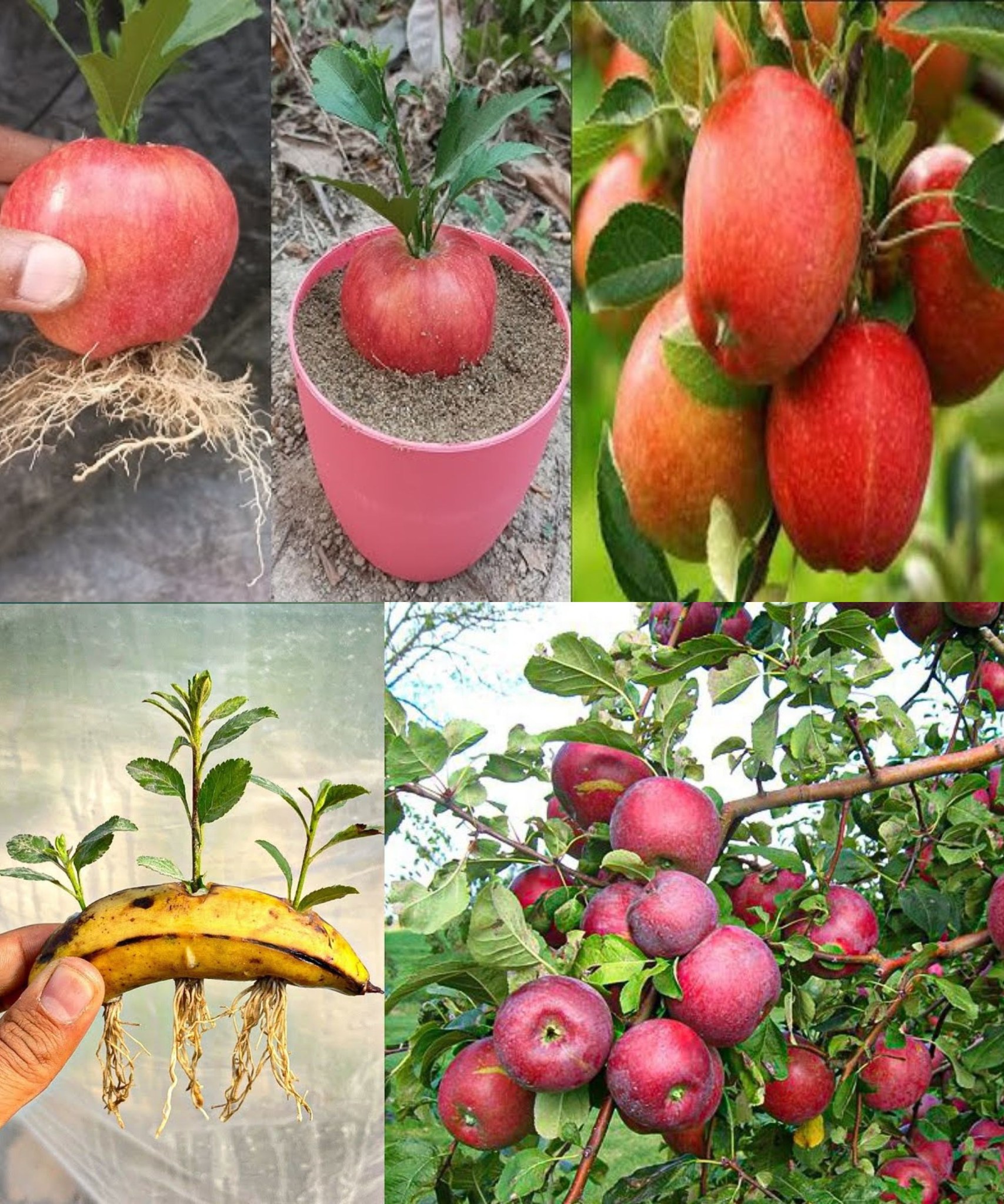
Growing apple trees from seeds at home can be a rewarding endeavor with the right preparation, and these seed-grown trees often exhibit more vigor than their grafted counterparts from nurseries. With patience, allowing an apple plant 3 to 4 years to mature, it can surpass the growth of a potted transplant. Once established, you’ll have a tree that has the potential to thrive for hundreds of years.
The primary reason apple trees are typically not cultivated from seeds is that the resulting fruit may not replicate the parent’s characteristics. Similar to humans, the seed-grown trees may share traits with their progenitors but will develop their own unique flavors and growth patterns. People generally prefer consistency, which is why apple trees are commonly propagated through grafting to ensure identical fruit production.
However, it’s worth noting that all the most beloved apple varieties started as seedlings at some point in their lineage. Planting an apple tree from seed is akin to a botanical lottery, and since the apple core might otherwise be composted, there’s really nothing to lose by giving it a try.
By selecting seeds from favored apple varieties, there’s a chance to cultivate trees that, while they may produce fruit better suited for cider or wildlife, will still contribute positively to the ecosystem. They provide bees with a bounty of flowers and nectar in the spring and assist in the pollination of other more desirable apple varieties. In this way, planting apple seeds is beneficial regardless of the outcome.
Preparing apple seeds for planting
Apple seeds require a period of cold stratification to awaken from their dormant state. To prepare them for planting, the seeds must be kept in a moist environment within a refrigerator for a minimum of six weeks. Wrap the apple seeds in a moistened paper towel, then place this towel inside a plastic bag. Leave the bag slightly open to allow for air circulation. Position the bag towards the rear of the refrigerator, and periodically check to ensure the paper towel remains damp throughout the stratification process.
Sprouting Apple Seeds on a Paper Towel
After the six-week stratification period in the refrigerator, you may notice that some of the apple seeds have begun to sprout. This is a positive sign, especially considering that apple seeds typically exhibit a low germination rate, with some estimates being around 30%.
When you purchase apples that are locally grown and it’s late in the season, several months past harvest, these apples have likely been chilled in storage for an extended period. Even so, it’s beneficial to give these seeds their own period of cold stratification in a moist paper towel. Extra stratification can only help, as insufficient chilling time can result in a lack of germination. In some cases, when slicing into apples that have been stored for a considerable time, you might find that some seeds have already started the germination process within the fruit itself.

How to Plant Apple Seeds
Once the apple seeds have completed at least six weeks wrapped in a moist paper towel within the refrigerator, they’re ready to be planted just like any other type of seed. If the timing aligns with the post-last frost of spring and the soil is manageable, you have the option to sow them directly outside. However, due to the typically low germination rates and the risk of wildlife such as squirrels, mice, and voles potentially disturbing the seeds, starting them off in pots is recommended.
Plant roughly a dozen seeds in a repurposed nursery pot filled with seed-starting potting mix. Maintain the soil’s warmth and moisture, similar to how you would care for other seeds planted in the spring, like tomatoes.
How long do apple seeds take to germinate?
Once the apple seeds have undergone six weeks of cold stratification, they tend to germinate rather swiftly. It’s common for some seeds to start sprouting right on the paper towel while still in your refrigerator, and these are the ones that will likely surface from the soil soonest after being planted. Provided the soil temperature is adequately warm, around 24°C (75°F), you can expect the seeds to break through the soil within 1 to 2 weeks.
After germination, continue to cultivate the apple seedlings in pots until the saplings are at least 10 to 15 centimeters (4 to 6 inches) tall.
Transplanting apple seedlings
To transplant your apple seedlings into the garden at the earliest opportunity, ensure that the nighttime temperatures are reliably above 10°C (50°F) during the spring or early summer.
After planting the apple seedlings in the ground, they will start their journey to becoming full-sized trees. As these trees are not grafted onto dwarfing rootstocks, which can restrict their size and nutrient uptake, they will grow robust and vigorous, and also quite large. With careful pruning, you can manage the size of your apple trees to some extent. However, it’s important to space full-sized apple trees a minimum of 20 feet apart to allow ample room for their growth.

How long do apple seedlings take to bear fruit?
Interestingly, apple trees grown from seed don’t necessarily take much longer to bear fruit than their grafted counterparts from nurseries. Nursery-bought apple trees typically start producing fruit around 8 years after being planted. These trees may have spent a considerable amount of time in their pots, which can lead to them becoming root-bound and somewhat stunted. Even large nursery trees, which may stand up to 15cm tall, often struggle with the shock of transplantation and need time to recover before they can resume vigorous growth.
Within three years of being planted in the ground, your seed-grown apple plants are likely to surpass the height of grafted nursery trees. Expect to wait around 5 years for your trees to begin bearing apples, although fruiting times can vary and only time will provide a definitive answer.
